The Lizard
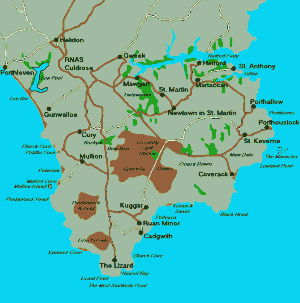

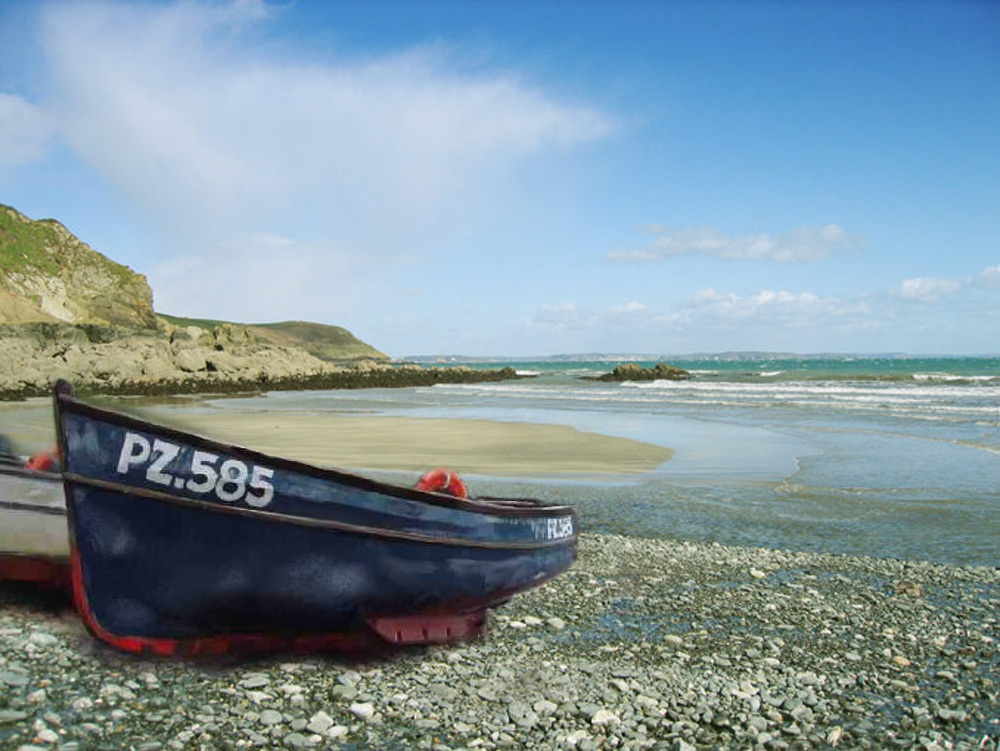
Porthallow Beach is a small sheltered cove, on the eastern edge of the Lizard Peninsula, close to the mouth of the Helford Estuary. The upper sections of the beach are mainly shingle and pebbles, with patches of sand and rock pools exposed at low tide. The Beach is dog friendly through out the year
Porthallow village and Beach are both accessed via the village of St Keverne - there is a large car park, literally on the very edge of the sands- with toilets nearby.
From Porthallow there are many views of the Fal estuary and you can watch the boats as they travel out of Falmouth Harbour. A stroll along the beach gives you spectacular views across Falmouth Bay, or you can browse through the collection of shipwreck relics and old photographs in the Five Pilchards Inn.
Porthallow has experienced many changes in fortune over the years. Only a few boats still set sail from the pretty hamlet of Porthallow, but, The "port at the end of the moor", was once an extremely prosperous fishing village, with a thriving pilchard fleet. The cove was originally used as a fishing base by Beaulieu Abbey and over time developed into a major fishery. 14th Century - Duchy of Cornwall records of 'revenues from Rents, raised on fishing ports', establish that Porthallow was a major part of the fishing industry, paying slightly less in annual rental, than Fowey - one of the counties most important ports. This level of activity continued right up to the 19th century- In 1832, 1,400 hogsheads of pilchards were landed in one day.
St Keverne village clusters around the square; you'll find whitewashed cottages, a beautiful church, two pubs and a handful of shops. St Keverne lies within the Cornwall Area of Outstanding Natural Beauty (AONB) with the same status and protection as a National Park. On summer evenings you might catch the St Keverne Band, or the Male Voice Choir, and the square really comes alive at the annual festivals of the Ox Roast, Carnival and Rodeo. A short walk out of the village brings you to Tregellast Barton, where you can follow lakeside and woodland nature trails.
During the Middle Ages, St Keverne was the site of an important monastery. St Keverne Church, has a tower is topped by a spire - which is non traditional in Cornwall. The church is larger than you would expect for a village church and is dedicated to St Akeveranus, although for a considerable period this was corrupted to Kieran; the form Keverne was revived at the Reformation.
In St Keverne Church, there's a shipwreck window; and in the churchyard, there is a stark memorial to the 106 lives lost when the liner Mohegan was wrecked in 1898. Just off the coast at Porthoustock (pronounced P'rowstock') is the reason why: the Manacles -Jagged rocks lying beneath the surface of the water. A 32-pounder carronade recovered by scuba divers in 1978 stands by the lych-gate to the churchyard. The carronade was discovered on the wreck of HMS Primrose - wrecked on The Manacles on 21 January 1809 with the loss of 125 lives and only one survivor, a drummer boy). The village itself was once the haunt of smugglers. In 1762, five men from here brought home 218 barrels of brandy!
The Manacles Reef is a popular Dive site - with Scuba centers operating guided dives on the Reef. For more information visit Atlantic Scuba - Click here for details. Atlantic Scuba offer Diving courses and guided Dives around Falmouth Bay and the Manacles Reef. Their Rib is based in Mylor on the Fal estuary.
St Keverne was once the heartland of Cornish-speaking West Cornwall, is famous as the origin of two major rebellions against the crown, in 1497 and again in April 1548.
A bronze memorial in the village and an earlier "memorial stone" set in the church wall, facing the village square, commemorate the village blacksmith Michael Joseph (An Gof) and lawyer Thomas Flamank.
They led the 'Cornish' protest against King Henry VII's "war taxes" - levied on the impoverished Cornish tin miners to help fund the 'English' suppression of the Scots. Cornwall at the time was very much an" independent" nation, with 'Cornish' as the first language. Cornwall had no issues with the "Scots" - and the people were unwilling to help fund a war against it . The "new" taxes, also, ignored established rights, granted by Edward I to the Cornish miners and the Stannary Parliament.
Joseph led an army of 15,000 marchers to Deptford Bridge - just outside of London - where on the 17 June 1497, they were met 25,000 of King Henry's soldiers in what is now known as the Battle of Blackheath. The uprising was routed by King Henry's soldiers. Joseph and Flamank were captured and subsequently hung, drawn and quartered. Both, Michael Joseph and Thomas Flamank, were granted the "king's mercy" - allowed to hang until dead before being decapitated. They were executed at Tyburn on 27 June 1497.
To celebrate the 500th anniversary of the "An Gof" uprising, a bronze statue of Michael Joseph and Thomas Flamank erected in 1997 - designed by Terence Coventry, a local sculptor. The new bronze, is in addition to the original memorial stone set in the church wall, facing the village square..
September 1497 saw the Second Cornish uprising - when Perkin Warbeck, a claimant to the throne landed at Whitesand Bay, near Land's End, on 7 September with just 120 men in two ships.
Perkin Warbeck hoped to take advantage of the Cornish unrest following the initial Cornish Rebellion of 1497, even though the Cornish had been defeated at the Battle of Blackheath on 17 June 1497. Warbeck proclaimed that he would put a stop to extortionate taxes levied to help fight a war against Scotland and was warmly welcomed in Cornwall.
His wife (Lady Catherine), was left in the relative safety of St Michael's Mount, and Perkin Warbeck set off to attack Exeter - his supporters declared him ‘Richard IV’ on Bodmin Moor. 0n 17 September 1487, Perkin Warbeck with a Cornish army numbering 6,000 soldiers entered Exeter. Warbeck then advanced on Taunton - but he panicked and deserted his army when he discovered that advanced elements of the Kings Army were at Glastonbury. Warbeck was captured at Beaulieu Abbey in Hampshire. The remaining elements of the Cornish army surrendered to Henry VII when he reached Taunton on 4 October 1497.
The Prayer Book Rebellion, was led by the St Keverne village priest; Martin Geoffrey. In 1547 as part of Edward VI's (aged nine) Protestant Reformation, Edward Seymour, 1st Duke of Somerset, began the introduction of a range of measures - aimed at changing the theology and practices of the Church. These measures were designed to "move" the English Church away from the traditional ways of the catholic church. These new measures included the introduction of the Book of Common Prayer - written wholly in English and to replace the four old Latin prayer books. These measures were specifically targeted at areas such as Cornwall and Devon, that retained a strong loyalty to the Roman Catholic religion and were seen in these areas, as attack on Cornish and Devonian cultural identities. The change was widely unpopular amongst the traditionally Catholic Cornish.
As the Protestant Reformation developed, King Edward V's Protestant advisors made more changes to the Church of England. The Archbishop of Canterbury - Thomas Cranmer, introduced a range of new pro Protestant measures, including a ban on traditional religious processions and pilgrimages, saints’ shrines and holy images were to be destroyed and Catholic religious customs were banned. To enforce these measures, he sent agents to remove all remaining symbols of Catholicism. In Cornwall, Archdeacon - William Body, was tasked with the "unpopular" role - his actions, creating great deal of local resentment - towards the desecrator of religious shrines.
This came to a climax in Helston on the 5 April 1548, after Archdeacon - William Body, tried to remove holy images from the Helston Parish Church. Incensed, by this violation, a group of parishioners from St Keverne, led by St Keverne's priest-Martin Geoffrey Marched to Helsto. They were joined by many locals along the way. William Body sought refuge in a nearby house in Church Street. The house was quickly surrounded by the angry mob and Body was dragged out into the street and stabbed to death, by William Kylter and Pascoe Trevian in Helston
The 'mob', which had swelled to around 3,000 people, had broken up and dispearsed by the time that Sir William Godolphin arrived with justices of the peace. Sir William Godolphin, the justices and Cornish gentry, had little control over the people of the west of the county. On April 7th a crowd of up to 3000 locals gathered to threaten reprisals should any of the ringleaders be arraigned to appear at the Helston Sessions.
Sir William Godolphin and Cornish gentry requested help from Sir Richard Edgecombe, in Devon. A general pardon was issued to all involved in the disturbances excepth for twenty-eight of the ringleaders. Six of them (including the priest, Martin Geoffrey), were taken to London. The rest were held for trial at the County Gaol in Launceston Castle . Eight Cornishmen were executed at Launceston Castle aptly named Castle Terrible -(Kylter and Trevian, were sentenced to be hanged, drawn, and quartered). Amnother show execution of a "traitor of Cornwall" took place on Plymouth Hoe. Those taken to London were all pardoned except for Martin Geoffrey who was hanged, drawn and quartered at Smithfield on June 7th - his head displayed on a spike on London Bridge for all to see.
In 1549, Edward VI' introduced the Book of Common Prayer, and insisted that the English language in church services for the first time. Many Cornish people did not speak English the replacement of the Latin service provoked cultural sensitivities as well as religious ones - causing resntment and unrest across Cornwall.
In June 1549, Cornwall erupted into rebellion and thousands of angry commoners, together with many parish priests and some gentlemen, gathered at the ancient hill fort of Castle Canyke near Bodmin. Within a few days, the Cornish rebels had captured all who remained loyal to the king, leaving no support in Cornwall for the crown. The Cornish protest quickly spread across the border to the Devon. The village of Sampford Courtenay, where, the villagers demanded that their priest wear his old garments and read from the old service book.
The opposition to the use of the Book of Common Prayer was widespread across the villages of Cornwall and Devon. Cornish rebels marched over the Devon border to join forces with the people of Sampford Courtenay. In July 1549, the 4,000–6,000-strong force of Cornish and Devon rebels – started a 6 week siege of Exeter - ( the regional capital), which had remained loyal to the crown. The rebels also sent a list of demands to the government.
John Russell, First Earl of Bedford, was instructed by the Crown to raise a powerful army and to put down the rebellion. On 3 August Russell began his march ton Exeter - engaging the rebels on the eastern side of the city. Several thousand rebels were killed in actions to break the seige. On 17 August, the remains of Rebel troops - led by Humphrey Arundell regrouped in the village of Clyst St Mary. The Rebels were defeated by the royal force led by Sir William Francis. Russell’s troops set fire to Clyst St Mary and the remaints of rebel forces retreated to the medieval bridge across the river. The rebels stood their ground for a while but had to give in to the overwhelming force arrayed against them. Over 900 rebels were taken prisoner - but the commanders of the royal army were worried at the prospect of another rebel attack, and ordered their soldiers to kill the rebel captives. The surviving rebel leaders were captured at Launceston Castle and taken to the Tower of London to await their punishment.
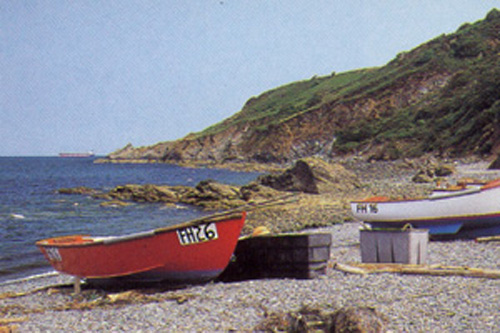
Porthallow Beach
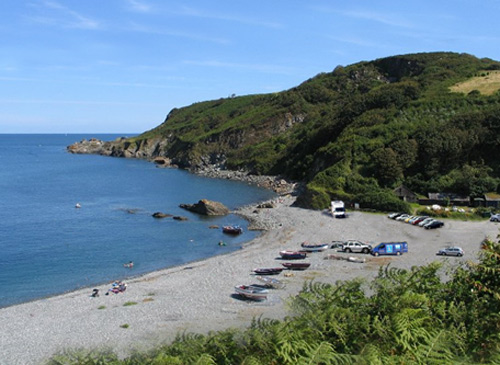
Porthallow Beach
The Old Vinayard Porthallow, St Keverne TR12 6QH · 01326 281559
Cornish pub right by Porthallow beach, the interior is stacked out with really good model ships, making it an interesting place to enjoy great ale and food
Porthallow, St Keverne TR12 6PP ·01326 280256
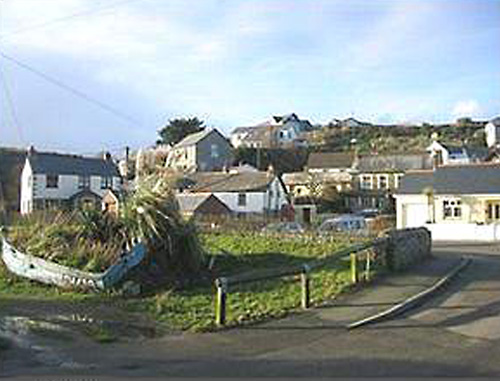
Porthallow Village
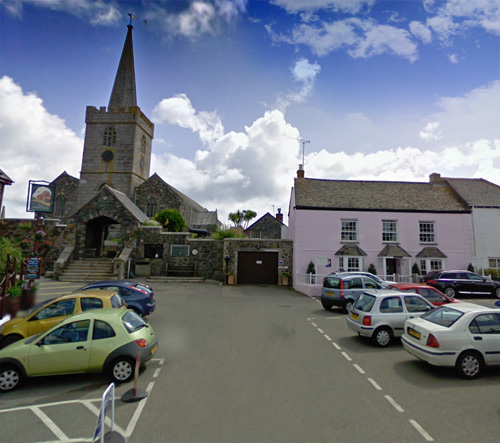
St Keverne
one of the prettiest pubs on the Lizard, a popular local with a long and interesting history
The Square, St Keverne TR12 6ND 01326 280325
The Square St Keverne, Helston TR12 6NA 01326 280949
Website Built, Hosted & Managed
by ITS Web Design 01579 557343
![]()